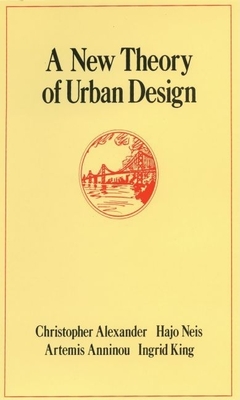You are here
Back to topA New Theory of Urban Design (Center for Environmental Structure) (Hardcover)
Email or call for price
Description
The venerable cities of the past, such as Venice or Amsterdam, convey a feeling of wholeness, an organic unity that surfaces in every detail, large and small, in restaurants, shops, public gardens, even in balconies and ornaments. But this sense of wholeness is lacking in modern urban design, with architects absorbed in problems of individual structures, and city planners preoccupied with local ordinances, it is almost impossible to achieve. In this groundbreaking volume, architect and planner Christopher Alexander presents a new theory of urban design which attempts to recapture the process by which cities develop organically. To discover the kinds of laws needed to create a growing whole in a city, Alexander proposes here a preliminary set of seven rules which embody the process at a practical level and which are consistent with the day-to-day demands of urban development. He then puts these rules to the test, setting out with a number of his graduate students to simulate the urban redesign of a high-density part of San Francisco, initiating a project that encompassed some ninety different design problems, including warehouses, hotels, fishing piers, a music hall, and a public square. This extensive experiment is documented project by project, with detailed discussion of how each project satisfied the seven rules, accompanied by floorplans, elevations, street grids, axonometric diagrams and photographs of the scaled-down model which clearly illustrate the discussion. A New Theory of Urban Design provides an entirely new theoretical framework for the discussion of urban problems, one that goes far to remedy the defects which cities have today.
About the Author
Christopher Alexander is a builder, craftsman, general contractor, architect, painter, and teacher. He taught from 1963 to 2002 as Professor of Architecture at the University of California, Berkeley, and is now Professor Emeritus. He has spent his life running construction projects, experimenting with new building methods and materials, and crafting carefully articulated buildings--all to advance the idea that people can build environments in which they will thrive. Acting on his deeply-held conviction that, as a society, we must recover the means by which we can build and maintain healthy living environments, he has lived and worked in many cultures, and built buildings all over the world. Making neighborhoods, building-complexes, building, balustrades, columns, ceilings, windows, tiles, ornaments, models and mockups, paintings, furniture, castings and carvings--all this has been his passion, and is the cornerstone from which his paradigm-changing principles have been derived.

